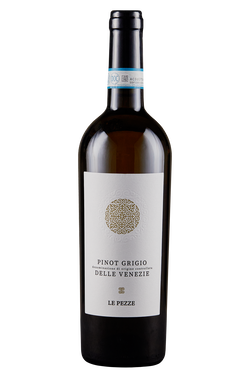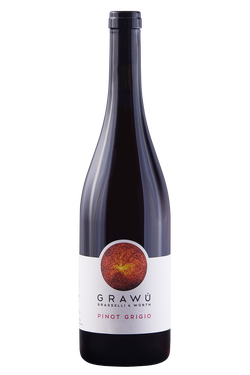- Wines >
- White wines >
- Pinot Grigio
Pinot Grigio in Italy: the origins
The first mentions of Pinot Grigio date back to 1883, according to the Agricultural Almanac of the Provincial Council of Agriculture for the Tyrol. Here it was emphasized to start its cultivation because it was considered a vine that gave abundant harvests and allowed the production of a very fine and elegant Muscat wine. The first import took place a few years later, from its homeland, Burgundy. It was General Sambuy who imported it to Italy, with the desire to cultivate it in his vineyards not far from Lake Como. This wine was so successful that it quickly spread to other regions, throughout Lombardy and Veneto. Its reputation grew to such an extent that, in the 1990s, it was also exported to the United States to be grown in Oregon and California. After a first peak of demand within Italy, Pinot Grigio began to be popular only abroad and in particular in countries such as the United States, China, Japan and the United Kingdom. These are still the biggest consumers of Pinot Grigio, and it is here that most of the Italian production is destined.
Cultivation of Pinot Grigio: a genetic mutation
Pinot Grigio is a mutation of the original Pinot Noir. It also stands out for its color: in fact, it is the only gray grape variety, with slightly coppery reflections. Its cluster, in addition to having a typically conical shape, is equipped with small leaves and spherical berries with very thin skin. It is mostly vinified in white although especially in Friuli, in the Collio area, the production of a fruity wine is obtained, fresh and yellow-orange thanks to the maceration of the grape in its must, together with the skins. The area of Pinot Grigio in Italy is about 17,300 hectares. The cultivation of this particular vine is relatively easy. It requires a cold climate but not excessive. At too cold temperatures, below 12 degrees, for example, the buds die. Another aspect to pay attention to is what is called acid rot. This is a characteristic pathology of the Pinot Grigio vine, linked to the shape of its heavy and compact cluster. Acid rot is generally created in the final stages of cultivation, making more controls necessary to avoid losing total production. Two of the most widely used solutions for this problem are flower thinning and defoliation. They are made when the berries do not exceed 3-4 millimeters in size and allow to eliminate the superfluous parts of the cluster that risk leading to infections and acid rot. Thanks to this technique adopted for some decades, the risk of infection has increased from 30% to 1.4%. Pinot Gris is cultivated with the method of the Trentino pergola, which allows the leaves to tilt by about 25 vol. compared to sunlight, for maximum use. The cluster, however, is kept protected from direct sun and with greater ventilation.
Organoleptic analysis of Pinot Grigio
The organoleptic characteristics of Pinot Grigio are unmistakable. Its productivity is very high, even if the cultivation requires some particular attention. The ripening is rather early, to overcome the problem of acid rot. The Pinot Grigio is in a still version but also sparkling or sparkling. On a gustatory level, the Pinot Grigio wine in the mouth is a dry, full-bodied and fruity wine but its primary characteristic is acidity. The nose, always very fruity and floral, recalls hints of apple, pear, litchi and jasmine. It also has herbaceous notes of freshly cut hay. Generally Pinot Grigio is vinified in steel tanks and almost never in wooden barrels or barriques. For this reason, during the tasting phase, it is recommended to open the bottle about half an hour before to allow the wine to oxygenate. Finally, it should be tasted at a temperature of 8-10 vol. in a fairly large glass, in order to swirl the wine and fully enjoy its fruity and delicate aromas. This wine has earned the denomination of controlled origin in Veneto, Trentino and Lombardy. Among these, we remember in fact Pinot Grigio DOC Venezia, Pinot Grigio DOC Collio, Pinot Grigio Trentino DOC. At sight Pinot Gris is yellow-green if vinified in white, while it has pink-coppery reflections if it is left to macerate with the skins in the must.
Pinot Grigio and food: the perfect pairings
The matching with typical recipes and traditional Italian dishes vary depending on the vinification of Pinot Grigio. It goes well from the aperitif, based on pizzas, focaccia or raw fish, and is also accompanied by the following dishes, from appetizer to second. The more coppery versions, which have undergone a greater maceration, are ideal with risottos, white meat dishes or with slightly aged cheeses. Excellent also in these cases in the versions sparkling, muscat or sparkling. Its freshness allows you to degrease the palate from more complex dishes such as polenta with cheese, crepes with cheese and ham, dumplings. It also enhances fish dishes such as cod alla vicentina, paella, spaghetti with seafood, salmon trout and many others. Finally, it can also be easily combined with a sweet with a slightly sour taste such as strawberry mousse, cheesecake with red fruits or apricot tart.
Italian and Alsatian Pinot Grigio: main differences
Italian and Alsatian Pinot Gris, although both derive from the Pinot Grigio grape variety, have some significant differences that mainly concern taste, style and approach to vinification. In Alsace, Pinot Gris, locally known as Pinot Gris, tends to have a more structured body, a greater aromatic complexity and a richer consistency. It can exhibit aromas of ripe fruit, spices, floral notes and a softness more evident in the mouth than the Italian version. In Alsace, terroir plays a fundamental role in the production of wine. The region is characterized by different soils, such as clayey, calcareous or granitic soils, which influence the taste and style of Pinot Grigio produced in this area. In summary, Italian Pinot Grigio tends to be lighter, fresh and fruity, whereas Alsatian Pinot Grigio (or Pinot Gris) usually shows a greater complexity, structure and roundness in the mouth. The differences come from the approach in the winery, the growing conditions and the wine making tradition of each region.















